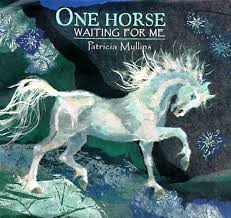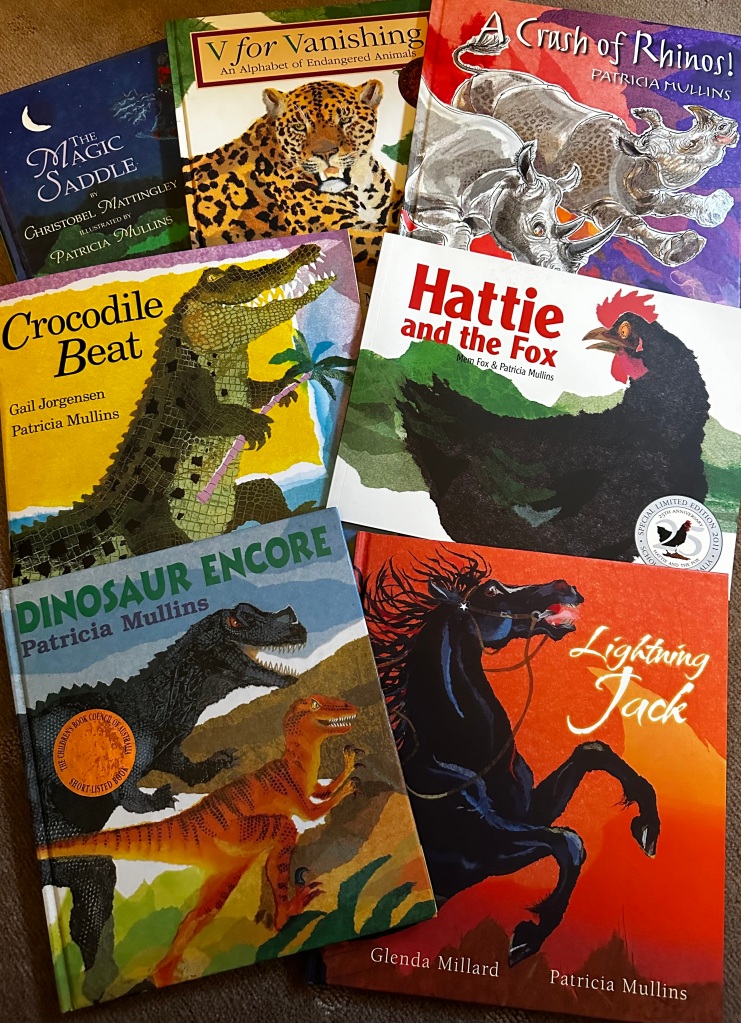
Interview with
Patricia Mullins
iconic picture book creator
I interviewed Patricia Mullins about her picture books for Magpies magazine earlier in 2024: Carousels, Conservation & Collage: Patricia Mullins
“Patricia Mullins is an iconic Australian children’s book illustrator of classics such as Hattie and the Fox and Shoes from Grandpa (written by Mem Fox), The Magic Saddle and Rummage by Christobel Mattingley, Lightning Jack (words by Glenda Millard) and her own V for Vanishing: An Alphabet of Endangered Animals, Dinosaur Encore, Crocodile Beat (words by Gail Jorgensen) and others.
Patricia is particularly well known for her exquisite paper collage; humour revealed through fine art; early environmental awareness and action; depiction of horses, both realistically and magically, and restoration of carousel horses.” (Magpies) https://magpies.net.au/magpies-magazine-current-issue/
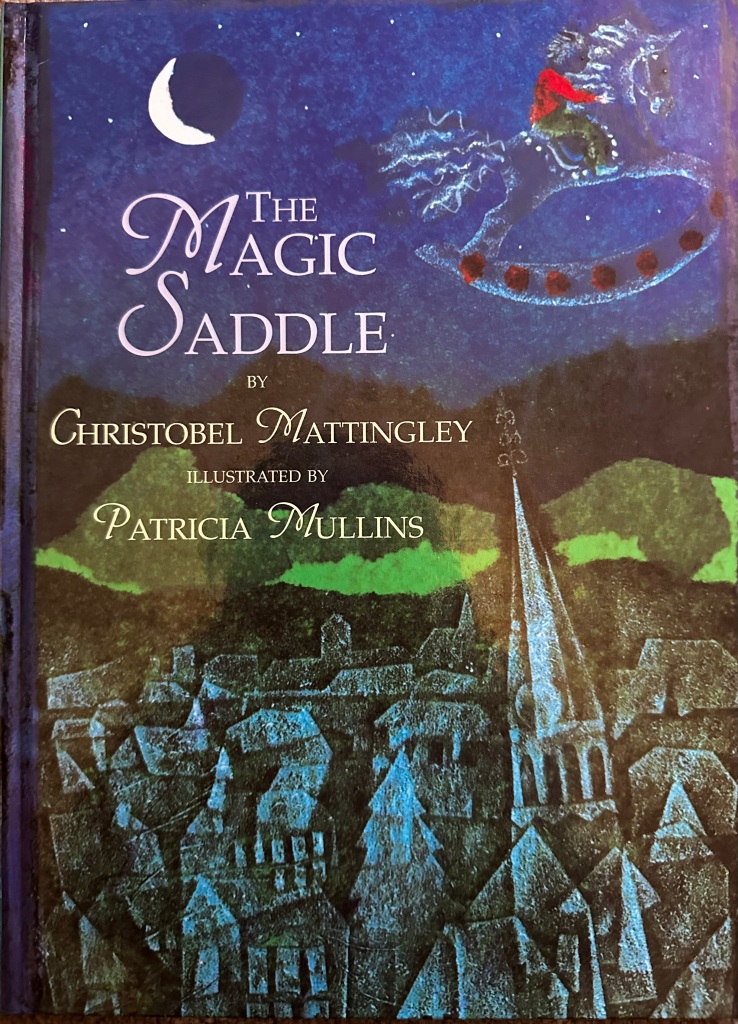
We continue the interview at PaperbarkWords blog.
Thank you for speaking with Joy in Books at PaperbarkWords, Patricia.
How have you worked with different publishers over the course of your career?
Usually it’s a publisher or an editor who first approaches me with an author’s manuscript. That was the case for most of my books in my career. But often people still think it’s their choice regarding an illustrator for a children’s story they would like illustrated. Sometimes it can be but, in my experience, the preferred way with publishers is for the publisher or editor to choose the illustrator with a style or approach they think will best fit a manuscript. Then a choice can be made in consultation with the author. The illustrator can choose whether they want to accept or not.
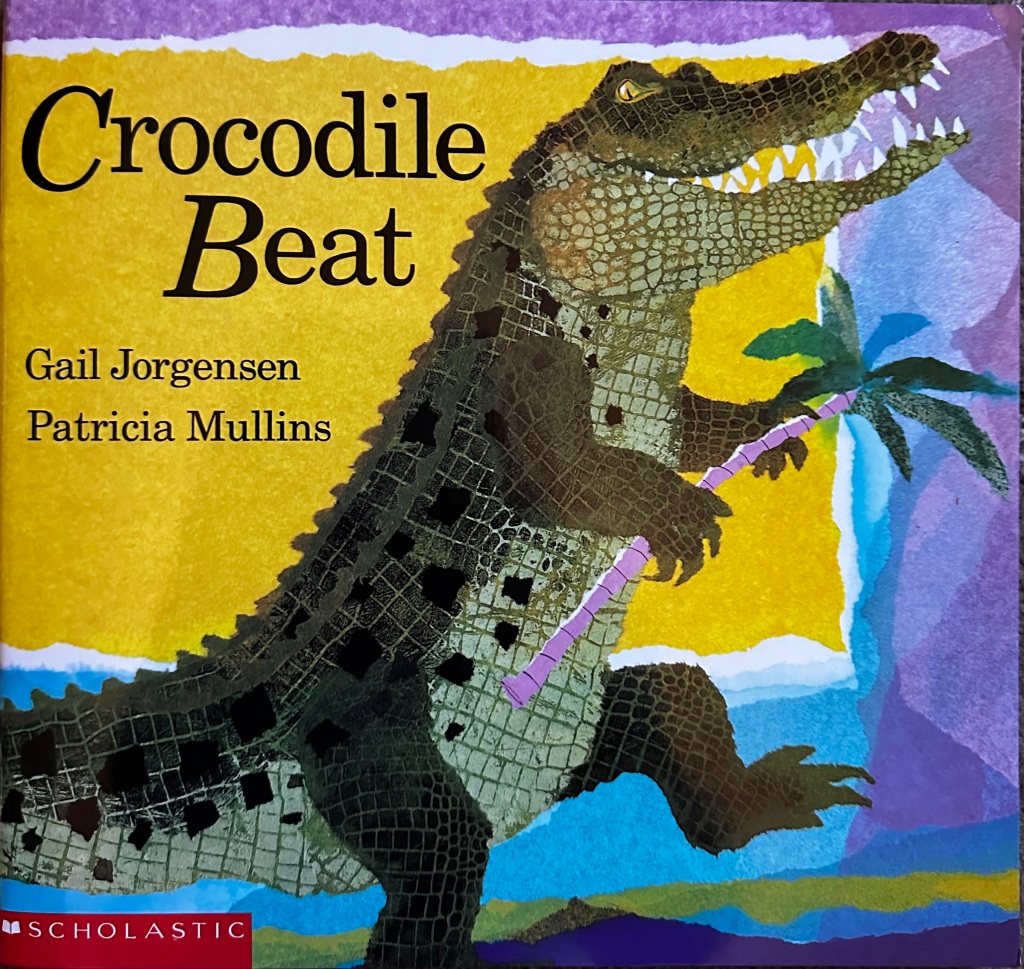
My work has been published by at least a dozen different publishers both in Australia and internationally. The publishers I worked with most were Omnibus Books, Scholastic Australia and in particular Margaret Hamilton, producing several picture books with her between 1977 – 2012.
Who are some of your illustrator peers whose work you admire?
There are so many! Australia has produced so many great children’s book illustrators over several decades. Around the 60s – 70s the book industry exploded with advances in printing technology such as offset printing and full colour reproduction. This meant that the work of illustrators could be created with great freedom using various mediums for the artwork. It was then photographed or scanned (by spinning around on rollers, hence well applied collage!)
At RMIT I was one of many art students – graphic design, textile design, visual art, fashion, industrial design, jewellery, ceramics etc… all located in Building 2 with 4 floors. It was a great mix with Ron Brooks being probably the best illustrator I encountered there, 2 years ahead of me. No lifts, just stairs, a buzz meeting place for all.
In 1974 after two post graduate years, I majored in Illustration. Both Fabulous Beasts (fabric and feathered models plus book illustrations) and Flowers for Samantha were part of my work in these years.
Artists whose work I admired at the time were Lautrec, Chagall and Goya, then picture book illustrators like Helen Oxenbury, John Birmingham, Brian Wildsmith and cartoonists Ronald Searle, Bruce Petty, Tomi Ungerer … and Disney animation when I was very young.
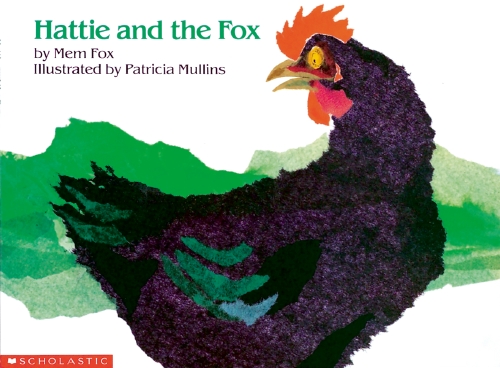
Tell us about what it’s like to collaborate on a book.
My experiences with all the authors whose stories I illustrated were positive. But I would not take on a book if an author wanted to direct how the illustrations would be done, mainly because of the restriction this could pose. Interpretation of the text, page design and creative expression I feel are so much part of an illustrator’s work. Sometimes preliminary sample illustrations and design ideas were presented and discussed. It’s always been important to me to be satisfied with the work at the time of completion while not worrying about trying to please others – it never quite works then!
Your books are noteworthy for their visual humour. How do you integrate this?
The starting point for me is from the first read of a manuscript. It either grabs me or it doesn’t and I automatically start to visually interpret the author’s text. Later when I’m designing the pages I like to extend what the reader might see beyond the text. Humour almost always plays an important part in engaging the reader, young or old.
Your books are distinctive for their beautiful paper collage. Please tell us a little about your use of colour in collage.
…People sometime ask “Do you dye your papers?” I don’t, as it’s often the particular, commercially dyed colour of a paper that inspires me or suggests its usage in a work.
Difficulty can arise with coloured pigments that can often fade using some tissue papers. But this is the case for artworks generally with certain pigments, be it paper dyes, water colours, oil colours etc. So appropriate storage and display is required for these works.
And some of your other illustrative techniques?
With texture, while this is apparent looking at an original work, it can come down to reproduction methods, and lighting if photographed, as to the how much texture is conveyed in the printed illustration.
While I love using a variety of mediums, it takes me time and practice to make things work as you want. Sometimes good things can just happen, too, if you recognise it at the time! “Failure”, while frustrating, can lead me in other directions, trying other ways, experimenting and/or doing it all again. Flowers For Samantha (1975) by Letitia Parr was probably the first picture book where I really explored collage for the first time combined with other mediums.
I selected Only a Donkey (story by Celeste Waters) to write teacher notes for Curriculum Corporation. How have you shown the difference between the donkeys of the past and present and portrayed their personalities or attributes?
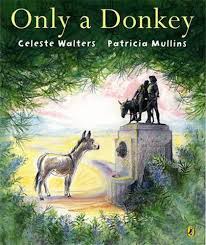
I observed donkeys carefully and sketched some from life at my then favourite animal place Collingwood Farm! I also visited an old donkey owned by a friend that had its own paddock, plus more at a donkey rescue place. So this gave me some understanding of differences in donkeys and how I would illustrate the character in Celeste’s story. I decided on a young donkey, who maybe would be more likely to be looking for magic as well as acceptance and friendship.
As a domesticated animal the donkey has endured centuries, has given so much service to humans, yet is such a humble creature. But their stubbornness (determination?) perhaps explains their survival… Celeste’s donkey was diligent and quietly determined to find the magic… despite the noise going on in the cart!
Animals often feature in your books. Tell us about the genesis of your animal-filled A Crash of Rhinos.
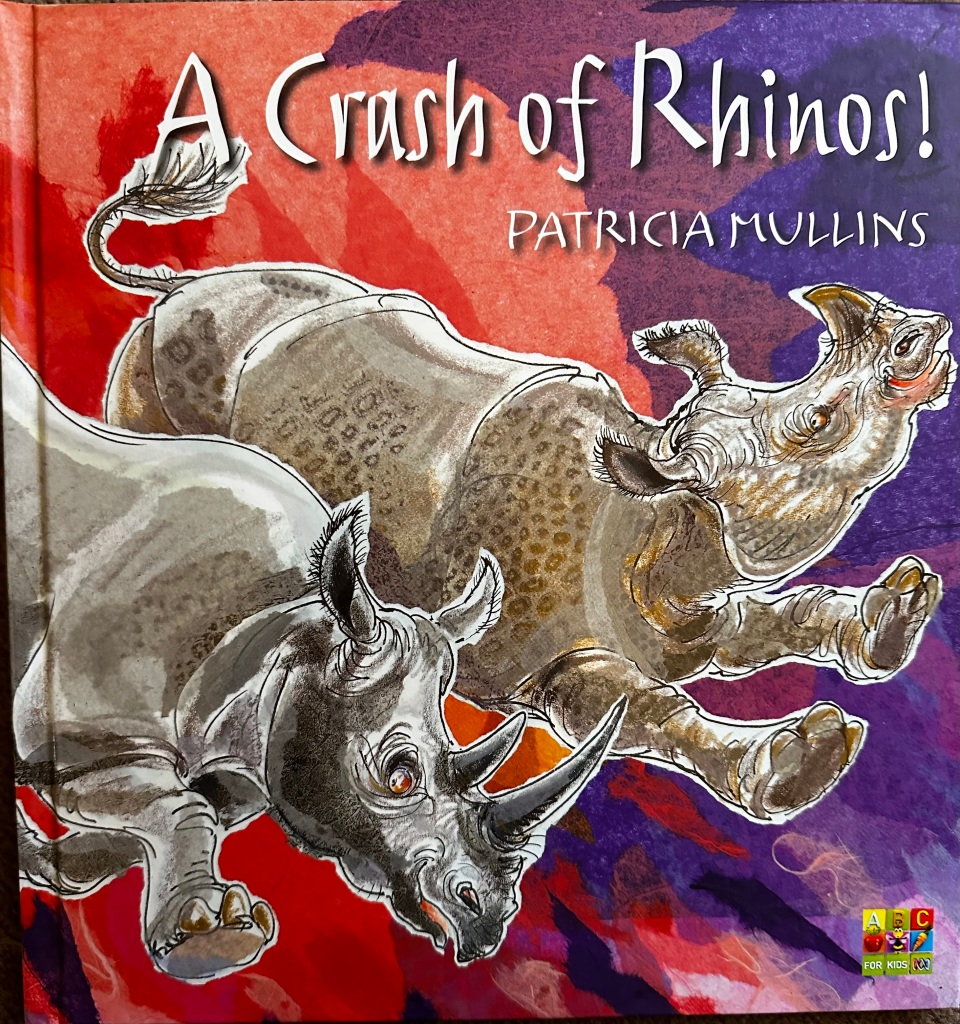
Living in Ballarat at a time of drought, Lake Wendouree was drying up and muddy expanses were cracking. I took photos of the brown ground. Sections of these photos were used for the muddy beds of the warthogs and my photo of a cannon near the lake appears on the title page. Once again, research and planning a picture book can take months for me.
Memorable horses feature across your body of work. Who has been a source of inspiration?
I loved Annette Macarthur Onslow’s soft illustrations of Elyne Mitchell’s Silver Brumby across the pages of that book. English horse painters George Stubbs and Alfred Munnings, also French artist Theodore Gericault inspired me in their capture of the life and mood of a horse, all brilliant draughtsmen and still my favourites.
Tell us more about your excellent picture book, Dinosaur Encore?
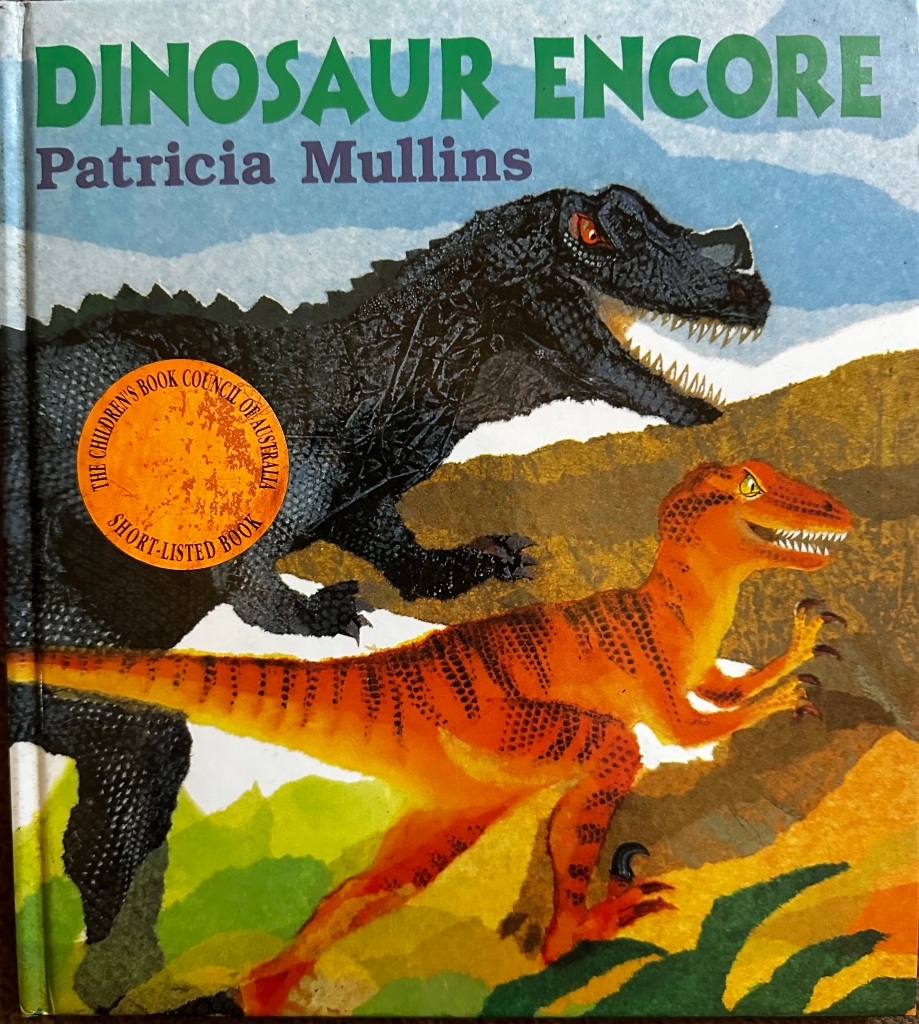
“Dinosaur Encore grew out of the questions my son asked me about dinosaurs when he was three and a half. Subtle humour appears throughout this book, dinosaurs being presented as more friendly creatures to young children, rather than scary (except for the T Rex!).” (Magpies magazine, reproduced with permission)
I showed the struthiomimus running faster than an ostrich after researching speeds of different animals. I found horses and cheetahs could outrun an ostrich and the estimated speed of this dinosaur. Some things aren’t explained, like the giraffe next to the brachiosaurus. The skeletal structure of their necks, shoulders and backs were similar, with both herbivores being high tree-top feeders.
You regard V for Vanishing as the seminal book of your career? Why?
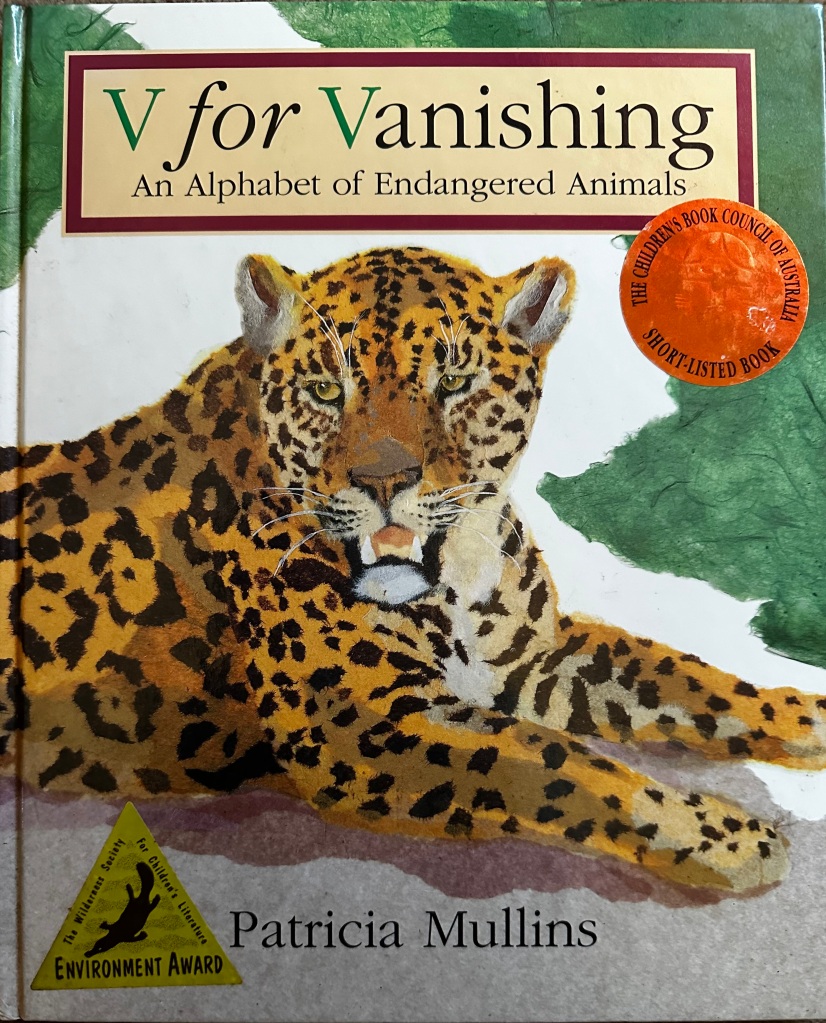
“In my career as a children’s picture book illustrator and to a lesser extent writer, the seminal book would be V for Vanishing, an alphabet of endangered animals.
This is a subject that is even more relevant today. Even so, many of the animals in my book remain critically endangered, the gastric brooding frog I believe now extinct, possibly also others. I wanted this book to raise awareness and understanding of what endangered meant, the plight of these and many other creatures and their species, and that it was possible to halt or slow down extinction by maintaining habitat. The children who read this book when it was published would now be adults and I‘ve sometimes wondered if any of them became involved in the protection of native wildlife or captive breeding programs and the saving of endangered species. It was a crisis then and remains so.”
[from interview in Magpies magazine, 2024, reproduced with permission]
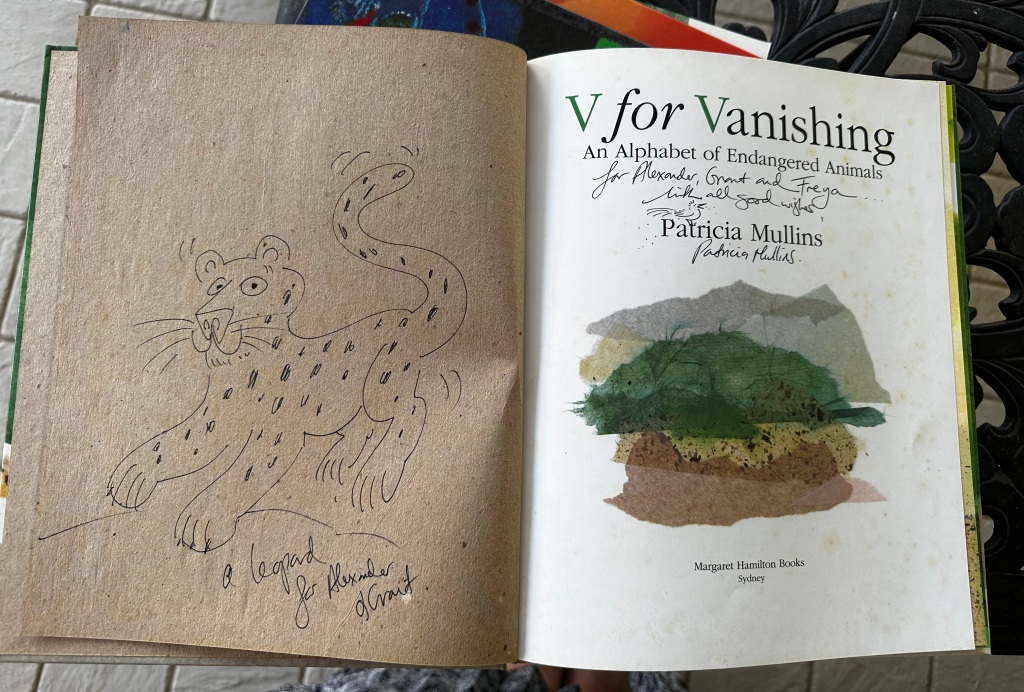
I was honoured to meet Patricia not long after V for Vanishing was published in 1993 and took my tiny twin boys along as well. Not only did she sign the book for us but she graciously drew the leopard illustration for Alexander and Grant, and still remembers drawing it.
You have created another important book in The Rocking Horse. Please tell us about that book.
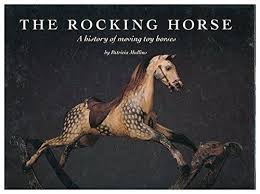
In my career as a restorer of old wooden horses, both rocking and carousel, the seminal book would have to be the one I wrote because I could never find enough information on them! This was The Rocking Horse, a history of moving toy horses (New Cavendish Books, London, 1992). A reference book of 376 pages it was a fundamental history of manufacture of rocking and toy horses from earliest times through to the mid 20th century. The concentration was on the 19th century and early 20th. With over 700 photos and illustrations, this book was published in London and became available in the UK, USA, and Australia. In England it became known by those in the rocking horse “fraternity” (quite a following in the UK) as “The Rocking Horse Bible”!
The Rocking Horse book nearly didn’t happen. But I didn’t give up. After many unsuccessful attempts at publication in the late 1980s in Australia, it was Bob Sessions at Penguin in Melbourne who offered to take my manuscript to New Cavendish Books in London who I had already been talking to. He did warn they may not be interested in the Australian chapter, fortunately they were! By that time the manuscript had grown… overall it took seven years to complete the research (that included seeking out those makers still alive with stories to tell), writing, photography (Ray Kinnane), then getting permission for use of various photos, travelling the UK in 1979 and then East Germany (before The Berlin Wall came down) in 1989. I was able to gain firsthand information on early rocking horse manufacture in these countries. With my husband and best editor, John Kirkpatrick, we braved the challenge of restrictions in visiting Eastern Germany where army tanks were rolling along the main streets. When we exited the border and I got out of the car to photograph and say goodbye to the Thuringian forest (wood for rocking horses) he could hear the Alsatian dogs barking and practically had a seizure on the spot! We survived!
The book was published!
What an exciting story, Patricia.
How is The Rocking Horse an integral part of your legacy?
As for the legacy of my book The Rocking Horse, a history of moving toy horses, it was the first ever in-depth, worldwide study of a manufacturing industry of these once important, children’s educational toys. I hoped it would inspire others to research the subject further which has since happened in the UK, Italy and Russia with people acknowledging the influence of my book.
Your books have been recognised with the Dromkeen Medal, the IBBY Australia Honour Books, by the Children’s Book Council of Australia and with other awards. Which award has meant the most to you, and why?
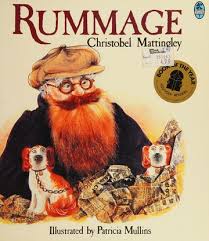
All of these awards have meant a lot to me. Very difficult to pick one that has meant more than another. Probably because each one recognises a different book (apart from the Dromkeen Medal). Certainly the international recognition has been very encouraging, including the two Dimensional Illustration Awards in New York USA, that were given for paper collage to V for Vanishing (1994) and One Horse Waiting For Me (1996) as well as the IBBY nomination for Lightning Jack (2013). The CBCA and its awards, are so important in recognising the work of Australian children’s book creators and children’s books generally. Highlights were when Rummage received the inaugural Junior Book of the Year and was commended in the Book of the Year 1982. The Magic Saddle and Lightning Jack shortlisted for Picture Book of the Year and V for Vanishing winning the Eve Pownall Award with Dinosaur Encore shortlisted.
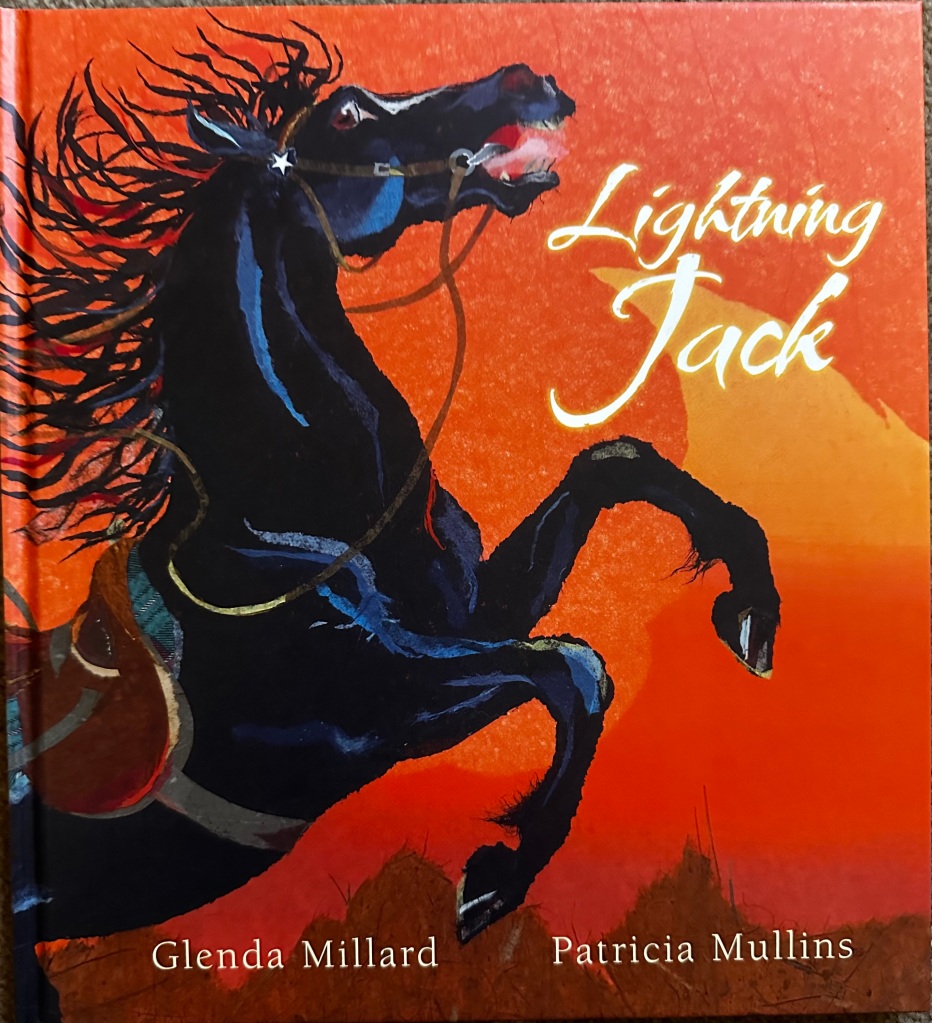
Receiving the Dromkeen Medal in 2012 was very special, having seen Dromkeen established by Joyce and Court Oldmeadow, then having my Fabulous Beasts models and book illustrations in their first exhibition. Court and Joyce came to my own first exhibition at the Hawthorn City Gallery in 1974 where they bought two illustrations from Dolphins are Different my first illustrated book (written by Letitia Parr, Angus&Robertson 1972). Dromkeen became such a special place where writers and illustrators could meet and be celebrated. Having Lightning Jack feature in Dromkeen’s final exhibition was a huge honour for myself and Glenda Millard, touched with a little sadness. Court and Joyce Oldmeadow had a vision for an Australian children’s book centre and realised this vision then witnessed it blossom. Family members ensured it grew. I was very grateful for the genuine support and friendship from the Oldmeadow family.
Thank you for your invaluable legacy of children’s books, Patricia, and also for answering these questions.
Thank you, Joy, for asking me to participate in your interview. Your questions have taken me back in time and made me realise the extent of the work that I have done over many years (and still do) making me ponder what is the legacy of this work that I leave? I feel honoured in that some of it is now held in public collections and can be accessed by those interested now and in the future. But what is in store for all that’s left in storage is still uncertain. Where will that go, who knows?
